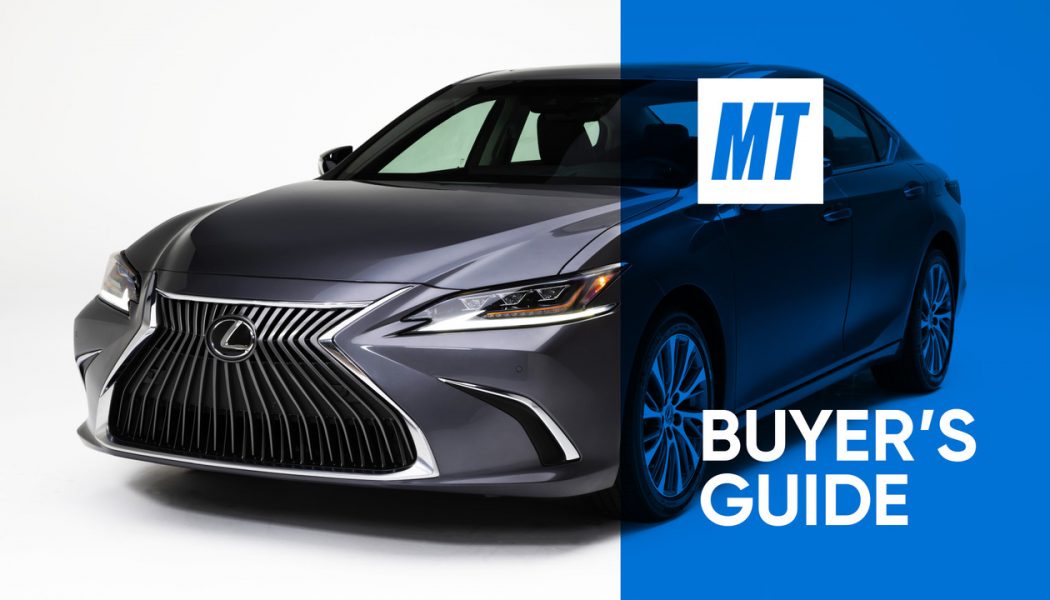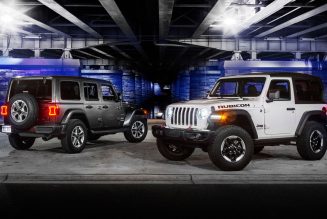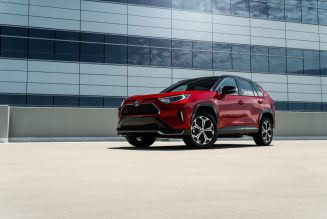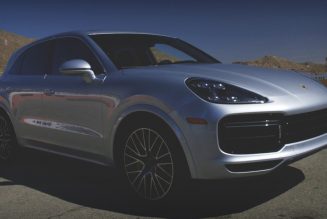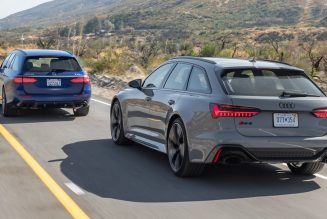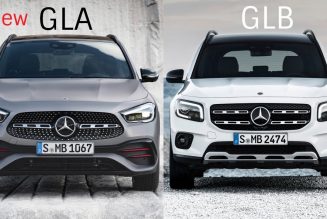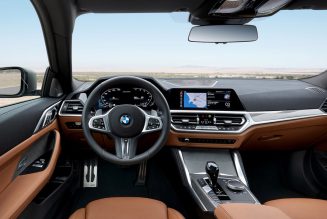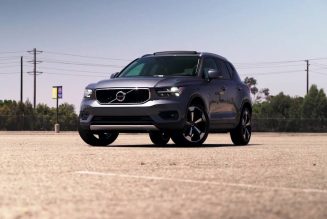That’s what makes such a comparison test so difficult. The losers aren’t really that loser-ish at all—even bottom-of-the-pack finishers will shuttle you and your family around town for the next 150,000 miles without major hiccups.
Which brings us to the candidates in this three-way comparison test: the 2021 Honda Accord, Hyundai Sonata, and Subaru Legacy. For the 99 percentile use case, put those suckers on a dart board and throw that pin. Your results won’t vary all that much. Often, it comes down to personal preference—buy the car you love. But for those of you on the fence, we’re here to help.
We know your time is valuable, so for you TL;DR folks out there, the winner of this comparison test is the Accord, straight up. But there are many reasons why you might prefer either the Sonata or Legacy instead. And that’s why you should keep reading.
You see, our favorite workaday midsize sedans don’t carry top marks in every category—some aren’t even exemplary in a singular aspect—but instead are the jack-of-all-trades, master of, er, some.
How Much Do They Cost?
With the crown comes pole position—the Honda is up first. As the 10th-gen Accord enters its fourth model year, it shows nary a wrinkle or a gray hair, especially as 2021 brought the Accord a very, very minor refresh in the form of tweaked front grille, updated wheel designs, and brighter LED headlights, along with some shuffled trim and a discontinued manual transmission option. As we’ve driven (and praised) this Accord generation since day one of the 2018 model year, we knew what to expect from this perennial stunner, equipped here in the $32,285 EX-L configuration.
The same cannot be said for the 2021 Subaru Legacy. Although it shares visual homogeneity with the prior generation, Subaru’s midsizer was redesigned for 2020, marking the nameplate’s long-awaited shift to the rather excellent Subaru Global Platform (SGP) that now underpins every single U.S.-bound product to wear the Pleiades on its snout (except the new 2022 BRZ). So, old looks, new bones. Our tester Legacy arrived in Limited spec with a $30,820 price tag.
Hyundai took a different approach to the new-for-2020 Sonata. Packing a visual wallop on par with the sleekest of Audis, the new Sonata is a statement piece from a brand increasingly concerned with standing out from the pack. This wasn’t a half-baked carryover job, either. Attention to detail on the Sonata is (mostly) impressive; with this much work levied onto the Sonata and sister Kia K5, the Koreans appear to be doubling down on the traditional sedan even as their competition distances itself with resources funneled primarily to crossover SUV offerings. Our Sonata SEL Plus stickered out at $32,050 after everything was tallied up.
Design: Plain and Plain Weird
As with most statement pieces in art, film, music, or fashion, taste is subjective. The Sonata’s dramatic profile and neato extended headlight arcs drew adulation from the judges, while its fish-mouth grille had us reaching for bleach to spray into our eyes. “Although I think the front end of the Sonata brings cool design features, the big, blobby grille kinda kills it for me,” MotorTrend en Español editor Miguel Cortina said. Associate editor Eleonor Segura was less polite: “The more I stare at that front end, the more I cringe.”
Hey, at least there’s something to look at on the Sonata, unlike the Legacy’s tepid bathwater tableau of the modern midsize sedan. It’s not a bad-looking car, nor is it handsome—it commits the ultimate sin of blandness. “It’s not a particularly attractive car,” executive editor Mac Morrison said. “It looks like a modern Oldsmobile. The entire front end looks really high, disjointed in its design, front to rear.”
Stylistically, the Accord shoots right down the middle. The tapered liftback-style rear end and aquiline frond end is a stylish-ish package, and it’s significantly nicer to look at than the frumpy Legacy and less polarizing than the Hyundai. The Modern Steel Metallic paint on our tester did little to accentuate the Accord’s sharper profile features, but we vastly prefer Honda’s reserved look to the Transformer-tastic angles of its compact Civic sibling.
Interior and Tech
In keeping with its drama-queen exterior, the Sonata’s interior carries the full weight of Hyundai’s styling department. Compared to the Legacy and Accord, the Sonata’s cockpit feels soothingly cohesive, less like a conglomeration of parts and more like one piece hewn from the same block. Some liked the design flair; others didn’t. “As with the exterior, something about the interior styling isn’t quite working for me,” features editor Scott Evans said. “It’s trying a little too hard.”
Evans’ unease aside, the Sonata’s tech-heavy presentation won over most of the judges. “The big screen gives a great impression and works really easily,” Cortina said. “The instrument cluster has a full digital display that looks great, and the interior has some details that stand out.” A single USB port in the rear is not ideal, as it leaves the rear occupants to fight over whatever external battery pack they brought with them. But overall, it’s a well-presented package.
The Subaru’s guts garnered less praise, though many noted the Legacy is on par with the rest of Subie’s lineup. Of particular note is the massive vertically oriented 11.6-inch infotainment screen that zhuzhes up the whole experience. It’s well-equipped for a $30,000 midsizer, too, with two USB ports, air vents, and heated seats for rear passengers.
The fit and finish of the Accord’s interior duds impressed, but some questioned the material designs and a pervading sense of austerity. “While perfectly nice, the cabin is a bit boring,” features editor Christian Seabaugh said. “It’s just dull black leather and textured plastics everywhere, with a splash of faux brown wood and metallic trim. Perfectly acceptable but not exactly segment leading.”
Most agreed infotainment was Honda’s weakest point. Aside from the smallish screen, the interface felt dated, sluggish, and somewhat obtuse. CarPlay integration assuaged some of the issues, but dealing with car settings or the radio proved frustrating. A fully digital dash was also noticeably absent, but we deducted no (hypothetical) points for that, as the Accord isn’t the only one in the class still sporting physical needles.
Engine and Transmission
As is the case with the majority of cars in this segment, all three of the cars mentioned here pack four-cylinder engines, with two sucking down the atmosphere with the help of turbocharging. As we tried to stick to midgrade trims and affordable price points for this comparison, the Accord and Legacy carry their entry-level engines, while the Sonata has its midgrade offering. If you want to spend a few grand more for the same content, you can access the Accord Sport’s 2.0T, the Sonata N Line’s 2.5T, and the Legacy’s primo 2.4T that we left on the factory shelf.
Our Accord poodled around with Honda’s ubiquitous 1.5-liter turbocharged four-cylinder, offering an evenly matched 192 hp and 192 lb-ft of torque. This matchy-matchy power spins those redesigned front wheels through a CVT (sorry, no stick shift anymore), and although we’re usually not the biggest fans of this type of transmission, our drivers couldn’t find much fault with the powertrain combo. “The engine is decent for a base engine, the power is there, and the transmission couldn’t work better with the engine,” Cortina said. “It’s smooth and quiet, and it will provide the necessary torque to get you going without any issues. Car manufacturers, take notes: This is how you should build a CVT.”
The group was less pleased with the Sonata’s midgrade 1.6-liter turbo-four. Its 180 hp and 195 lb-ft are a near-enough match for the Honda’s 1.5-liter, but how this power was delivered raised hackles. Morrison noted a more pronounced vibration at idle than the other cars, and others complained of the agrarian engine note that pierced the otherwise quiet and well-dampened cabin. Elsewhere, the engine garnered no marks above average.
The Legacy’s 2.5-liter naturally aspirated flat-four packed an adequate on-ramp punch at 182 hp and 176 lb-ft, but the accompanying aural assault proved jarring. “The boxer four has its own sound, which isn’t great,” Morrison said. “It’s thrashy. It’d be nicer with the optional turbo.” With the standard CVT keeping the revs high and sustained, passing or entering the highway is an exercise in unpleasant thrash. “I don’t enjoy it,” he added. “It grates on you after a while.”
It’s not just sound where the Subie suffers. Without the low-down turbocharged punch, it’s the slowest of this trio, with a tested 0-60 time of 8.3 seconds to the Accord’s 7.2 seconds and the Sonata’s 7.8. Even if you give it some room, it doesn’t gain any ground on the other two; the Legacy’s tested quarter-mile time is 16.4 seconds to the Accord’s 15.5 seconds and the Sonata’s 16.0.
How They Drive
Out on the tarmac that runs through SoCal’s Palos Verdes Peninsula, these three sedans proved they excel and falter at different points on the graph. After taking a few blows for its style-by-soap-bar and thrash-tastic flat-four, the Legacy’s supremely well-dampened and tuned suspension impressed both in handling and in its peanut butter-smooth ride. “Wonderful ride quality and impressive handling,” senior features editor Jonny Lieberman said. “The car is actually fun to drive. Plus, it’s the only one with standard AWD, a huge consideration for cold weather markets.”
Praise for the Legacy’s new bones continued. “The handling is good but not great,” Evans said. “It’s pretty confident in a corner. It just needs less body roll. You’re really leaning against the sides of your seats. The ride quality, at least, is among the best in the group.” Cortina agreed: “Body control is excellent. The undulations in Portuguese Bend didn’t seem to bother the suspension, as the ride felt refined.”
This is where the Sonata looked like it was mostly show and not much go. With a shaky ride, nausea-inducing body control (or lack thereof), and Novocain-numb steering, the Sonata found few fans while cutting through Palos Verdes or even simply rolling down the interstate. “The Sonata seems to react twice to almost every bump in the road,” Lieberman said. “Over minor imperfections, it’s worse. It’s as if the dampers have no rebound and just keep on compressing.”
Ever the enthusiast’s pick, the Accord proved it’s still got that value-added quality in nearly every scenario—it seems like Honda engineers spent the extra hour to get things just right. The Accord’s track feels wide and square, with baked-in confidence befitting something more performance oriented. Most of the inputs—steering, brakes, and throttle—are as well-weighted and balanced as you would ever want from a supposedly milquetoast midsized sedan. If you think that sounds like a refrain we commonly reserve for Porsche products, you’d be right. “It’s as if Porsche has been tasked with building a front-drive economical commuter sedan,” Lieberman said. “Amazing that all these decades later, the Honda Accord is still the one to beat.”
As a result, the Accord is a runaway first-place finisher in the handling department. It doesn’t ride quite as nice as the Legacy, but the Accord’s greater package of dynamic character and perfectly engineered inputs, along with its inoffensive engine and near-perfect CVT tuning, make it a delight to drive over a curvaceous squiggle of road. “From a driver’s perspective, Honda has probably hit the perfect balance between engagement and comfort,” Seabaugh said. “While not outright sporty, the Accord handles wonderfully, with light, smooth, predictable steering.”
Funny, that. On our skidpad and figure-eight test, the Accord was solidly in the middle of these three cars, clocking 0.82 g of max lateral acceleration on the skidpad and an average course time of 27.1 seconds at 0.63 g around our figure eight. Compare this to the much-maligned Sonata’s 0.85 g max lateral acceleration and course time of 27.0 seconds and 0.64 g average. The Legacy matches the Sonata’s Accord-beating 0.85g lateral acceleration but lags slightly behind the Accord on the figure eight at 27.1 seconds and 0.62 g average. A classic case of how numbers only tell half the story.
Which is the Best?
It’s the 2021 Honda Accord by a landslide. The Accord’s potent combination of style, interior refinement, and impeccable driving character makes it our clear choice even though it is four model years into its life cycle.
However, the Honda’s laurels do not whither the runner-up wreathes of the 2021 Subaru Legacy and the 2021 Hyundai Sonata; it’s genuinely difficult to purchase a stinker in this segment, and both the Hyundai and the Subaru are solid choices you won’t have to explain to Bob the Overly Inquisitive Neighbor.
Want to stand out as much as a new midsize sedan possibly can? Go for the 2021 Hyundai Sonata. If it’s all-wheel drive and impeccable ride quality you’re after, the 2021 Subaru Legacy is a great choice. For everything else and more, stick with the segment standard—the 2021 Honda Accord.
| POWERTRAIN/CHASSIS | 2021 Honda Accord (EX-L) | 2021 Hyundai Sonata (1.6T SEL Plus) | 2021 Subaru Legacy (Limited) |
| DRIVETRAIN LAYOUT | Front-engine, FWD | Front-engine, FWD | Front-engine, AWD |
| ENGINE TYPE | Turbocharged I-4, alum block/head | Turbocharged I-4, alum block/head | Flat-4, alum block/heads |
| VALVETRAIN | DOHC, 4 valves/cyl | DOHC, 4 valves/cyl | DOHC, 4 valves/cyl |
| DISPLACEMENT | 91.4 cu in/1,498 cc | 97.5 cu in/1,598 cc | 152.4 cu in/2,498 cc |
| COMPRESSION RATIO | 10.3:1 | 10.5.0:1 | 12.0:1 |
| POWER (SAE NET) | 192 hp @ 5,500 rpm | 180 hp @ 5,500 rpm | 182 hp @ 5,800 rpm |
| TORQUE (SAE NET) | 192 lb-ft @ 1,600 rpm | 195 lb-ft @ 1,500 rpm | 176 lb-ft @ 4,400 rpm |
| REDLINE | 6,600 rpm | 6,500 rpm | 6,000 rpm |
| WEIGHT TO POWER | 16.7 lb/hp | 18.5 lb/hp | 19.5 lb/hp |
| TRANSMISSION | Cont variable auto | 8-speed automatic | Cont variable auto |
| AXLE/FINAL-DRIVE RATIO | 3.24:1/1.31:1 | 3.37:1/2.14:1 | 3.70:1/2.07:1 |
| SUSPENSION, FRONT; REAR | Struts, coil springs, anti-roll bar; multilink, coil springs, anti-roll bar | Struts, coil springs, anti-roll bar; multilink, coil springs, anti-roll bar | Struts, coil springs, anti-roll bar; multilinks, coil springs, anti-roll bar |
| STEERING RATIO | 11.8:1 | 13.3:1 | 13.5:1 |
| TURNS LOCK-TO-LOCK | 2.3 | 2.7 | 2.7 |
| BRAKES, F; R | 11.5-in vented disc; 11.1-in disc, ABS | 12.8-in vented disc; 11.8-in disc, ABS | 12.4-in vented disc; 11.8-in vented disc, ABS |
| WHEELS | 7.5 x 17-in cast aluminum | 8.0 x 19-in cast aluminum | 7.5 x 18-in cast aluminum |
| TIRES | 225/50R17 94V Michelin Energy Saver A/S (M+S) | 245/40R19 94W Pirelli P Zero All Season (M+S) | 225/50R18 95V Yokohama Avid GT (M+S) |
| DIMENSIONS | |||
| WHEELBASE | 111.4 in | 111.8 in | 108.3 in |
| TRACK, F/R | 63.0/63.4 in | 63.4/63.7 in | 62.2/63.4 in |
| LENGTH x WIDTH x HEIGHT | 192.2 x 73.3 x 57.1 in | 192.9 x 73.2 x 56.9 in | 190.6 x 72.4 x 59.1 in |
| TURNING CIRCLE | 38.3 ft | 35.9 ft | 36.8 ft |
| CURB WEIGHT | 3,206 lb | 3,322 lb | 3,552 lb |
| WEIGHT DIST, F/R | 60/40% | 60/40% | 58/42% |
| SEATING CAPACITY | 5 | 5 | 5 |
| HEADROOM, F/R | 37.5/37.2 in | 40.0/37.4 in | 39.4/37.3 in |
| LEGROOM, F/R | 42.3/40.4 in | 46.1/34.8 in | 42.8/39.5 in |
| SHOULDER ROOM, F/R | 58.3/56.5 in | 57.9/56.1 in | 58.1/57.4 in |
| CARGO VOLUME | 16.7 cu ft | 16.0 cu ft | 15.1 cu ft |
| TEST DATA | |||
| ACCELERATION TO MPH | |||
| 0-30 | 2.8 sec | 2.8 sec | 3.0 sec |
| 0-40 | 3.9 | 4.1 | 4.5 |
| 0-50 | 5.4 | 5.8 | 6.2 |
| 0-60 | 7.2 | 7.8 | 8.3 |
| 0-70 | 9.3 | 10.1 | 10.8 |
| 0-80 | 11.9 | 13.2 | 13.9 |
| 0-90 | 14.9 | 16.9 | — |
| 0-100 | — | — | — |
| PASSING, 45-65 MPH | 3.7 | 4.0 | 4.2 |
| QUARTER MILE | 15.5 sec @ 92.0 mph | 16.0 sec @ 87.5 mph | 16.4 sec @ 86.7 mph |
| BRAKING, 60-0 MPH | 129 ft | 126 ft | 127 ft |
| LATERAL ACCELERATION | 0.82 g (avg) | 0.85 g (avg) | 0.85 g (avg) |
| MT FIGURE EIGHT | 27.1 sec @ 0.63 g (avg) | 27.0 sec @ 0.64 g (avg) | 27.1 sec @ 0.62 g (avg) |
| TOP-GEAR REVS @ 60 MPH | 1,700 rpm | 1,700 rpm | 1,500 rpm |
| CONSUMER INFO | |||
| BASE PRICE | $32,285 | $29,305 | $30,820 |
| PRICE AS TESTED | $32,285 | $32,174 | $30,820 |
| STABILITY/TRACTION CONTROL | Yes/Yes | Yes/Yes | Yes/Yes |
| AIRBAGS | 8: Dual front, front side, f/r curtain, front knee | 9: Dual front, f/r side, f/r curtain, driver knee | 8: Dual front, front side, f/r curtain, driver knee, passenger thigh |
| BASIC WARRANTY | 3 yrs/36,000 miles | 5 yrs/60,000 miles | 3 yrs/36,000 miles |
| POWERTRAIN WARRANTY | 5 yrs/60,000 miles | 10 yrs/100,000 miles | 5 yrs/60,000 miles |
| ROADSIDE ASSISTANCE | 3 yrs/36,000 miles | 5 yrs/Unlimited miles | 3 yrs/36,000 miles |
| FUEL CAPACITY | 14.8 gal | 15.9 gal | 18.5 gal |
| EPA CITY/HWY/COMB ECON | 30/38/33 mpg | 27/37/31 mpg | 27/35/30 mpg |
| ENERGY CONS, CITY/HWY | 112/89 kWh/100 miles | 125/91 kW-hrs/100 miles | 125/96 kWh/100 miles |
| CO2 EMISSIONS, COMB | 0.59 lb/mile | 0.63 lb/mile | 0.64 lb/mile |
| RECOMMENDED FUEL | Unleaded regular | Unleaded regular | Unleaded regular |
| *Regular fuel ratings; 93 octane raises Mazda to 250 hp @ 5,000 rpm and 320 lb-ft @ 2,500 rpm; Nissan to 248 hp @ 5,600 rpm and 273 lb-ft @ 4,000 rpm | |||
